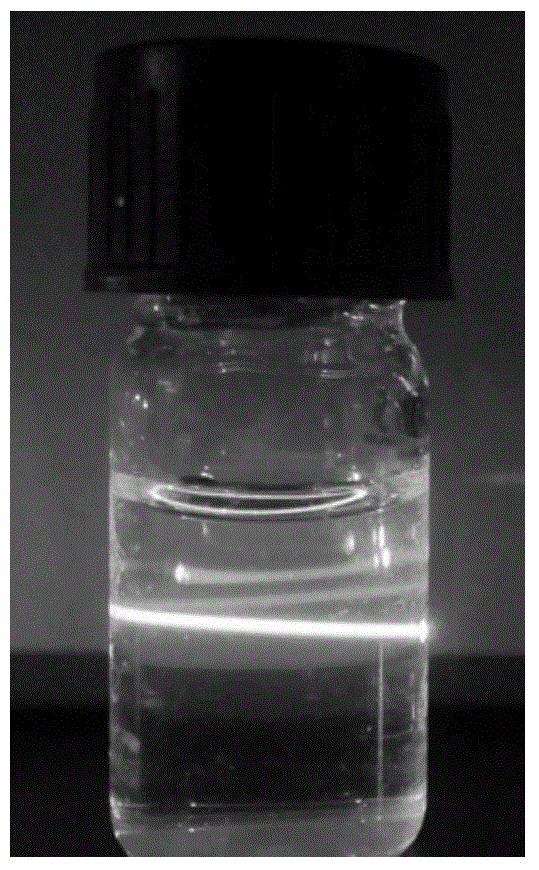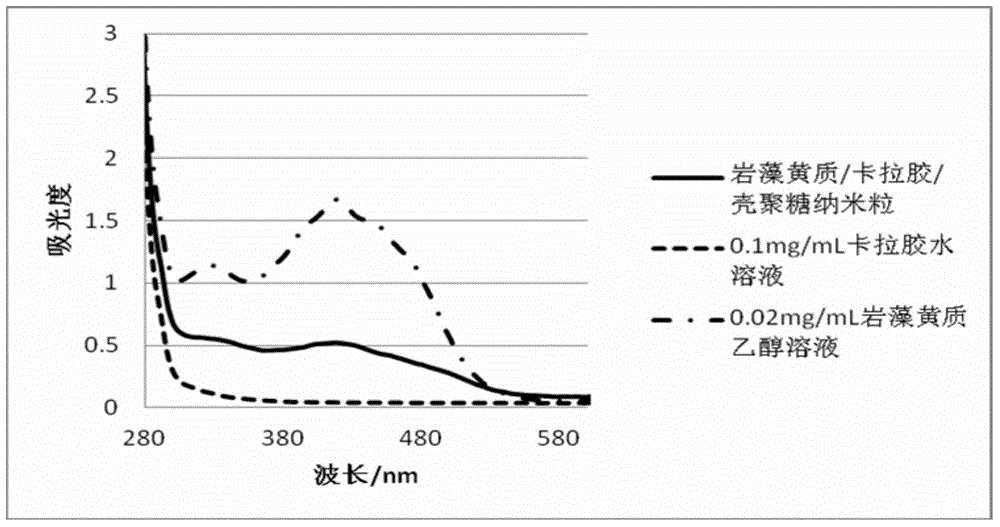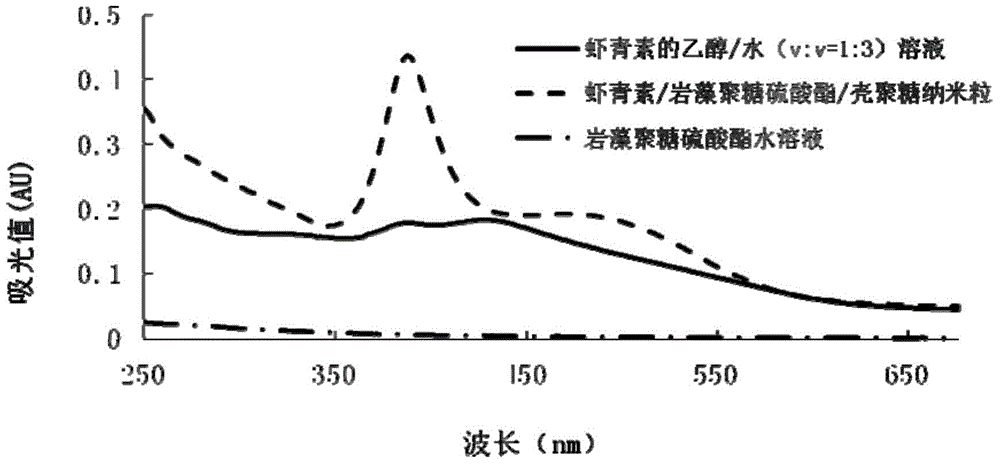Nano carrier prepared from marine sulfated polysaccharide, nano complex and application of nano carrier
A nanocomposite, sulfated polysaccharide technology, applied in the application field to achieve the effects of improving stability, efficient utilization, and abundant sources
- Summary
- Abstract
- Description
- Claims
- Application Information
AI Technical Summary
Problems solved by technology
Method used
Image
Examples
Embodiment 1
[0067] The preparation of embodiment 1 sea cucumber chondroitin sulfate / chitooligosaccharide nanocarrier:
[0068] Take 0.1 mg / ml sea cucumber chondroitin sulfate aqueous solution, mix it with 0.1 mg / ml chitosan oligosaccharide solution, and stir at high speed for 30 minutes to obtain sea cucumber chondroitin sulfate / chitooligosaccharide nanocarrier. Then, the Tyndall phenomenon was observed on the prepared nanocarrier suspension as follows: figure 1 shown. from figure 1 It can be seen that when a beam of light passes through the prepared colloidal solution, a bright "path" can be observed in the colloid from the vertical direction of the incident light, indicating that sea cucumber chondroitin sulfate and chitosan oligosaccharides are successfully compounded to form nanocarriers .
Embodiment 2
[0069] The preparation of embodiment 2 fucoxanthin / carrageenan / chitosan nanoparticles:
[0070] Take 0.1 mg / ml chitosan dilute hydrochloric acid solution, mix it with 0.02 mg / ml ethanol solution of fucoxanthin and 0.1 mg / ml carrageenan solution in turn, stir in the dark for 10 minutes, and then spin evaporate to remove ethanol to obtain entrapped rock Chitosan-carrageenan nanocomposite suspension of alcoxanthin; transfer the nanocomposite suspension to a clean glass container, add an equal volume of deionized water and 1% glucose solution in sequence, and freeze the mixed solution at -50°C After 24 hours, use a vacuum freeze dryer to freeze-dry for 24 hours to obtain fucoxanthin / carrageenan / chitosan nanoparticles. The absorption spectrum of the nanocomposite suspension was detected by an ultraviolet photometer, such as figure 2 The light absorption at 450 nm proves that the nanocomposite has successfully encapsulated fucoxanthin, and the encapsulation efficiency of fucoxanth...
Embodiment 3
[0071] The preparation of embodiment 3 astaxanthin / fucoidan sulfate / chitosan nanoparticles:
[0072] Take 0.2mg / ml chitosan dilute hydrochloric acid solution, mix it with 0.03mg / ml ethanol solution of astaxanthin and 0.07mg / ml fucoidan sulfate solution successively, stir in the dark for 10 minutes, and then remove ethanol by rotary evaporation. The astaxanthin-loaded chitosan-fucoidan sulfate nanocomposite is obtained, that is, the astaxanthin / fucoidan sulfate / chitosan nanocomposite. image 3 It is the ultraviolet spectrogram of the nanocomposite. The light absorption at 390nm proves that the astaxanthin contained in the nanocomposite exists in the form of H-type vesicles, and the astaxanthin content in the nanosystem can be calculated to be 20 μg / ml.
PUM
| Property | Measurement | Unit |
|---|---|---|
| Molecular weight | aaaaa | aaaaa |
Abstract
Description
Claims
Application Information
 Login to View More
Login to View More - R&D
- Intellectual Property
- Life Sciences
- Materials
- Tech Scout
- Unparalleled Data Quality
- Higher Quality Content
- 60% Fewer Hallucinations
Browse by: Latest US Patents, China's latest patents, Technical Efficacy Thesaurus, Application Domain, Technology Topic, Popular Technical Reports.
© 2025 PatSnap. All rights reserved.Legal|Privacy policy|Modern Slavery Act Transparency Statement|Sitemap|About US| Contact US: help@patsnap.com



